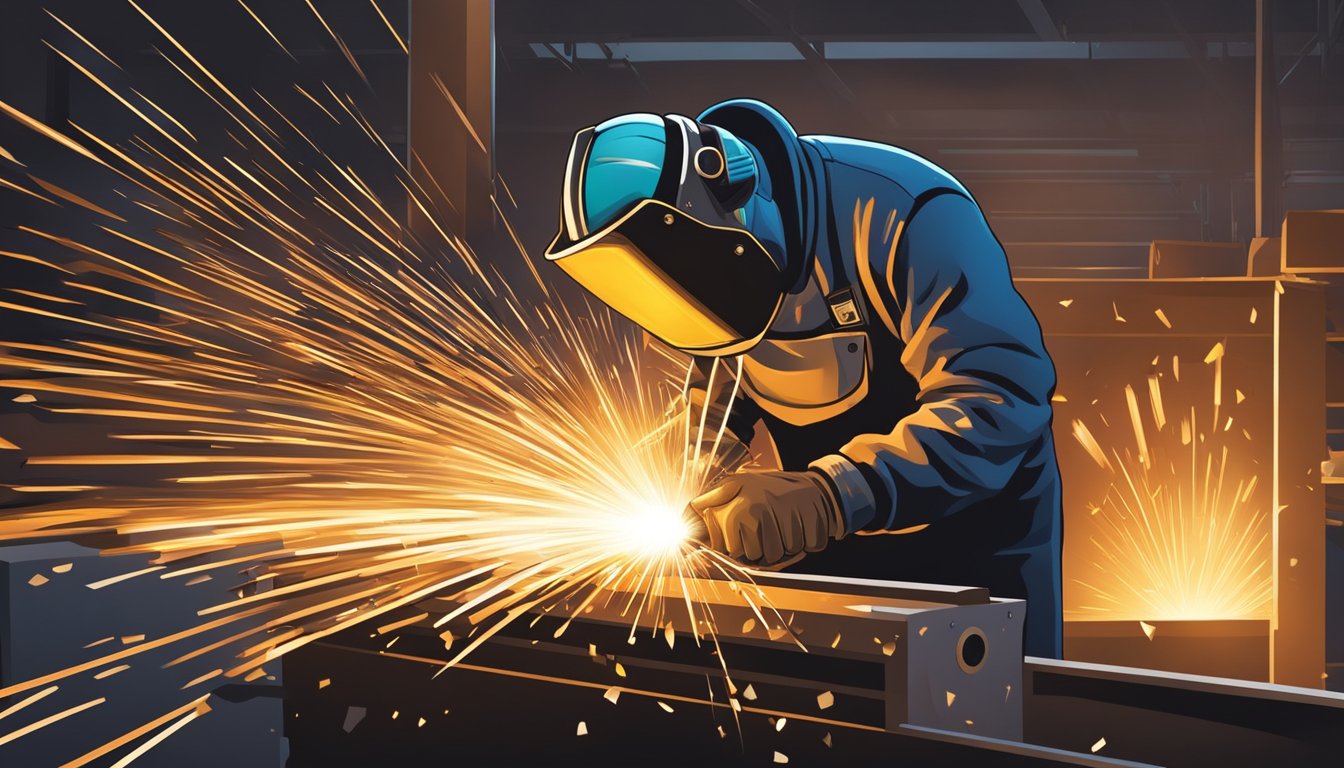The Ultimate Overview to Welding WPS Procedures: An Extensive Introduction for Welders
In the detailed globe of welding, Welding Treatment Specs (WPS) offer as the backbone of guaranteeing high quality, consistency, and safety in welding operations (welding WPS). As we dive right into the numerous parts of a WPS and discover the complexities of certification and certification, we will uncover the essential duty these treatments play in the realm of welding.
Importance of WPS Procedures
Comprehending the relevance of Welding Procedure Specifications (WPS) treatments is crucial for ensuring the top quality and honesty of welded frameworks. WPS treatments work as a roadmap for welders, describing the necessary actions, specifications, and materials needed to achieve an audio weld. By sticking to WPS standards, welders can make sure consistency in their work, bring about structurally sound and trusted welds.
One of the main factors why WPS treatments are essential is their duty in maintaining weld quality and stability. Complying with the defined welding parameters and techniques detailed in the WPS aids prevent defects such as porosity, breaking, or incomplete fusion, which can endanger the toughness and resilience of the weld.

Parts of a WPS
A Welding Treatment Specification (WPS) generally comprises vital parts that detail the specific needs for performing a weld, making sure consistency and quality in the welding procedure. The essential parts of a WPS consist of important variables such as base metals, filler steels, preheat and interpass temperatures, welding procedures, securing gases, welding settings, and post-weld heat therapy needs.
Base steels refer to the products being signed up with, while filler metals are used to fill the space in between the base steels throughout welding. The welding procedure outlines the specific strategy to be made use of, whether it's gas steel arc welding (GMAW), shielded steel arc welding (SMAW), or an additional technique. Welding settings specify the orientations in which welding can be carried out.

Certification and Qualification
Having actually developed the vital components of a Welding Procedure Specification (WPS), the emphasis now shifts in the direction of the important aspects of credentials and certification in welding practices.

Qualification, on the various other hand, is the formal acknowledgment of a welder's certifications by a pertinent qualification body or organization. Welding qualifications are commonly based on the specific welding processes, products, and positions a welder is qualified to collaborate with. Holding a valid welding accreditation demonstrates that a welder satisfies market standards and is qualified to perform welding tasks to the required requirements.
Producing a WPS
To create a Welding Treatment Specification (WPS) that fulfills market requirements, mindful factor to consider of welding procedures, materials, and operational criteria is crucial (welding WPS). The primary step in developing a WPS is to determine find out here the welding procedure to be used, such as gas metal arc welding (GMAW) or protected steel arc welding (SMAW) Once the welding process is established, the next important aspect is selecting the suitable materials, taking into consideration factors like base steel kind, density, and joint layout. Operational specifications such as welding existing, voltage, travel speed, and securing gas composition must additionally be meticulously defined in the WPS.

Executing and Monitoring WPS
Upon settling the detailed Welding Treatment Requirements (WPS) that meticulously information welding procedures, products, functional specifications, and quality control steps, the focus shifts to efficiently carrying out and pop over to this web-site monitoring the established procedures. Application includes making certain that all welders entailed in the task recognize with the WPS and follow it diligently during the welding process. This requires providing ample training and guidance to assure adherence to the defined treatments. Checking the WPS includes constant oversight to verify that welding tasks align with the documented specifications. Inspections, testing, and top quality control measures are important elements of the monitoring procedure to determine any concerns or inconsistencies without delay. Routine audits and evaluations of the welding treatments assist in maintaining consistency and high quality throughout the job. Reliable application and surveillance of the WPS are crucial for ensuring the integrity, toughness, and safety of the welded joints, ultimately adding to the overall success of the welding task.
Conclusion
Finally, understanding and adhering to Welding Procedure Requirements (WPS) is critical for welders to ensure high quality, uniformity, and security in their job. By knowing the components of a WPS, acquiring correct certifications and qualifications, creating comprehensive treatments, and applying and monitoring them successfully, welders can improve their abilities and effectiveness in welding methods. Sticking to WPS procedures is vital for generating high-quality welds and meeting sector criteria.
In the intricate world of welding, Welding Procedure Specifications (WPS) serve as the foundation of ensuring quality, consistency, and security in welding procedures. The welding process outlines the specific strategy to be made use of, whether it's gas metal arc welding (GMAW), protected steel arc welding (SMAW), or an additional method.To establish a Welding Procedure Specification (WPS) that meets sector requirements, mindful consideration of welding processes, materials, and operational specifications is essential. The first action in developing a WPS is to recognize the welding procedure to be made use of, such as gas steel arc welding (GMAW) or secured metal arc welding (SMAW)Upon completing the extensive Welding Procedure Spec (WPS) that thoroughly information welding processes, materials, functional specifications, and quality guarantee procedures, the focus shifts to efficiently implementing Clicking Here and keeping an eye on the well established procedures.